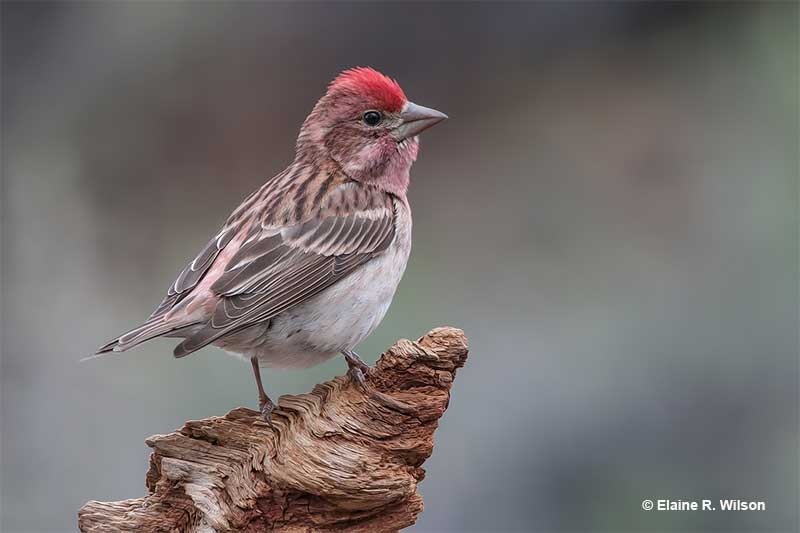
Bird names can tell us a lot! They can reveal where a bird lives, what it looks like, and teach us a new word or two.
How many birds start with the letter “C”? How did they get those names?
See this article to learn all about the birds with names that start with “C”!
On this page
- Birds That Start With C
- Cackling Goose
- Cactus Wren
- California Condor
- California Thrasher
- California Towhee
- Calliope Hummingbird
- Canada Goose
- Canada Jay
- Canada Warbler
- Canvasback
- Canyon Towhee
- Canyon Wren
- Cape May Warbler
- Carolina Chickadee
- Carolina Wren
- Caspian Tern
- Cassin’s Auklet
- Cassin’s Finch
- Cassin’s Kingbird
- Cassin’s Sparrow
- Cassin’s Vireo
- Cattle Egret
- Cave Swallow
- Cedar Waxwing
- Cerulean Warbler
- Chestnut-backed Chickadee
- Chestnut-collared Longspur
- Chestnut-sided Warbler
- Chihuahuan Raven
- Chimney Swift
- Chipping Sparrow
- Chuck-will’s-widow
- Chukar
- Cinnamon Teal
- Clapper Rail
- Clark’s Grebe
- Clark’s Nutcracker
- Clay-colored Sparrow
- Cliff Swallow
- Colima Warbler
- Connecticut Warbler
- Cooper’s Hawk
- Cordilleran Flycatcher
- Costa’s Hummingbird
- Couch’s Kingbird
- Crescent-chested Warbler
- Crested Caracara
- Crissal Thrasher
- Curve-billed Thrasher
- Bird Families Starting With C
Birds That Start With C
Cackling Goose
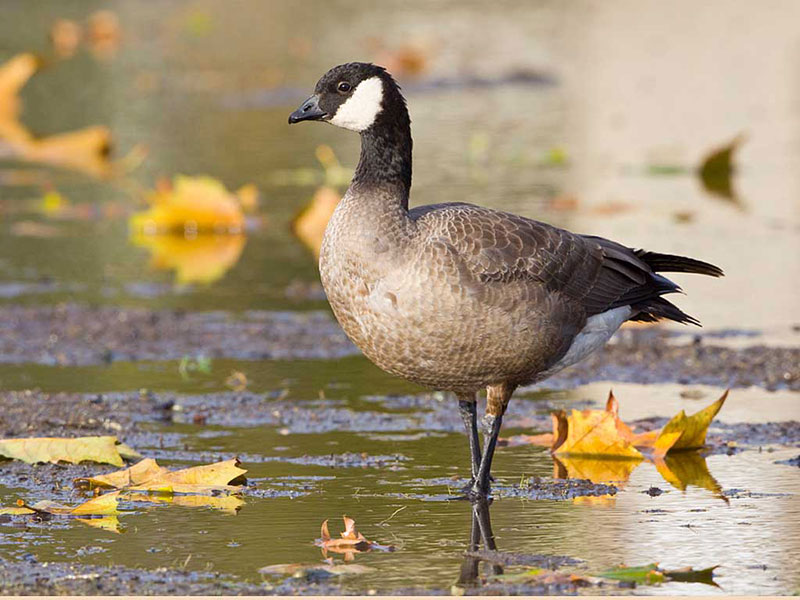
The Cackling Goose doesn’t really make a cackling call! However, it does make a brief, higher-pitched vocalization than the species it used to be lumped with; the Canada Goose. To separate it from the bigger bird, when the small goose was recognized as a valid species, it became the “Cackling Goose”.
Cactus Wren
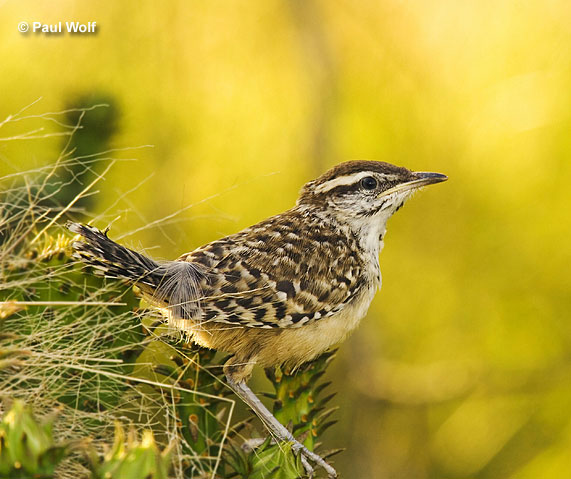
This is a great name for this desert species. Although Cactus Wrens can use other types of vegetation, they do love to forage and nest on cactus. Go birding in desert habitats of the American Southwest and you’ll probably see one singing from the top of a cactus.
California Condor
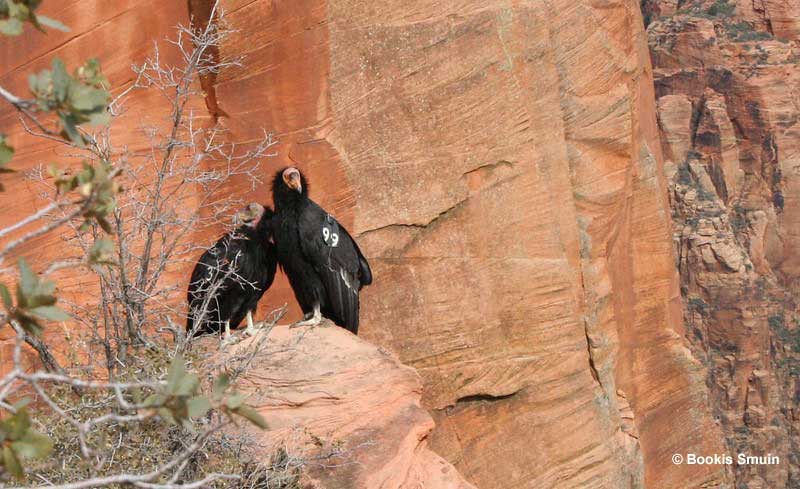
California Condors are named after the main part of their range, and their relation to the Andean Condor. These relics of prehistoric times nearly went extinct until major conservation efforts saved the last remaining birds in southern California. Since them California Condors have been successfully reintroduced to Arizona, southern Utah, and southern Nevada.
California Thrasher
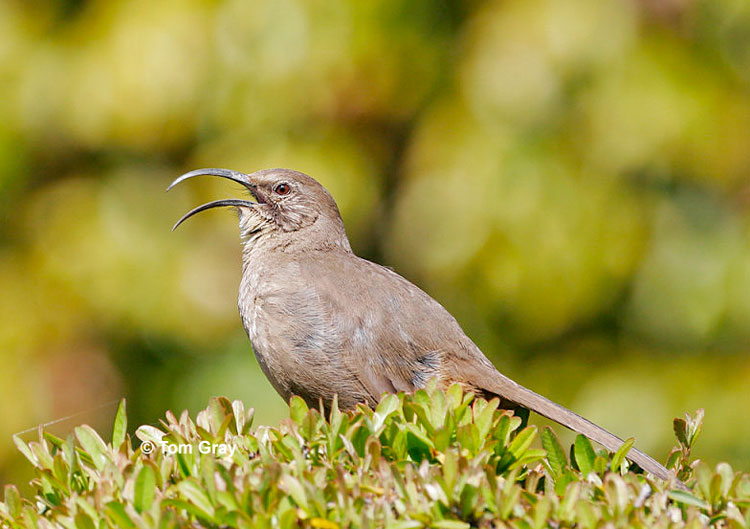
Another “California” bird, the shy California Thrasher mostly lives in the state of California. It hides in dense shrubby vegetation in many parts of the state as well as northern Baja California. A few might also skulk in southern Oregon but most are strict Californians.
When birding in California, watch for birds singing from the tops of bushes.
California Towhee
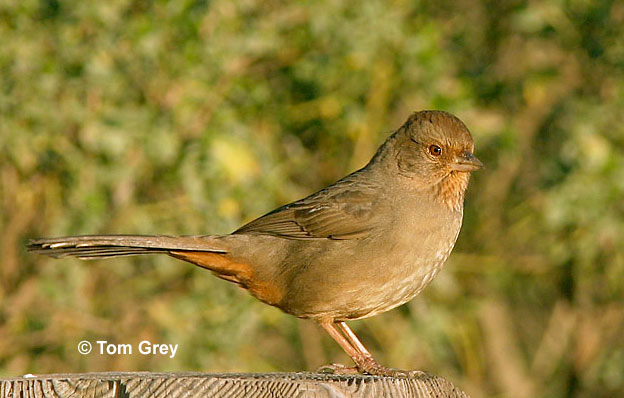
The California Towhee is another bird named after a main part of its range. In many parts of the state, it’s a common, backyard bird. They also occur in parts of Oregon and Baja California.
This bird used to be known as the descriptive Brown Towhee until that species was split into the California Towhee and the Canyon Towhee.
Calliope Hummingbird
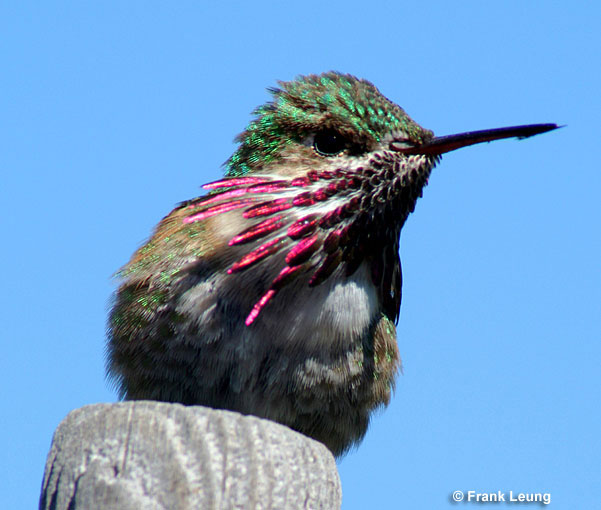
The Calliope Hummingbird must have made an exquisite impression on the ornithologist who gave the bird it’s English language name. He named it after “Calliope”, the ancient Greek muse who inspired epic poetry and eloquence.
The male Calliope Hummingbird’s beautiful, streaked gorget could certainly inspire poetry and other works of art.
Canada Goose
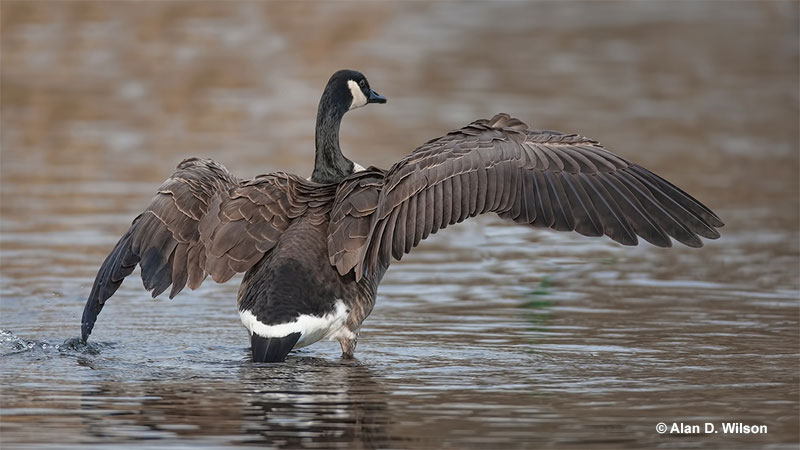
The Canada Goose got its name after explorer Samuel Champlain sent some of these big geese to Europe in the early 17th century. He gifted a few pairs to French King Louis XIII and since the birds had come from Canada, the species became known as the Canada Goose.
Canada Jay
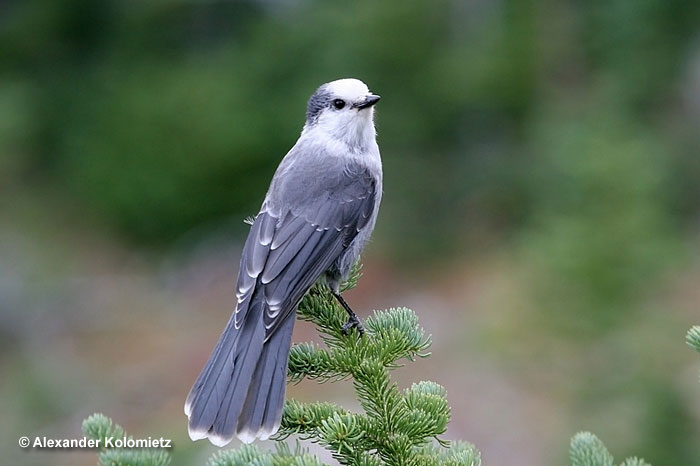
Canada Jays used to be known as the “Gray Jay”. However, in 2018, the American Ornithologist Society voted to change the bird’s name to Canada Jay. This was actually the jay’s original English language name and is a good one. Canada Jays occur in a large area of Canadian boreal forest habitats.
Canada Warbler
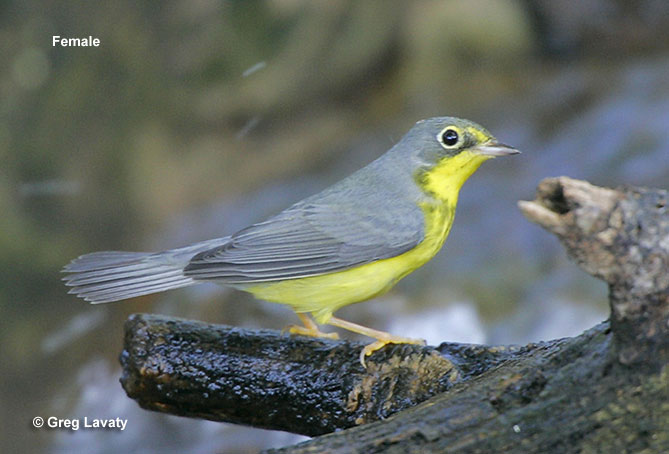
The Canada Warbler got its name from an 18th century scientific description of the bird. This description was based on a specimen that was collected in Canada, and indeed, most of the bird’s breeding range is in that country.
Canada Warblers also breed in parts of the northeastern USA and have also been known as the “Necklaced Warbler”.
Canvasback
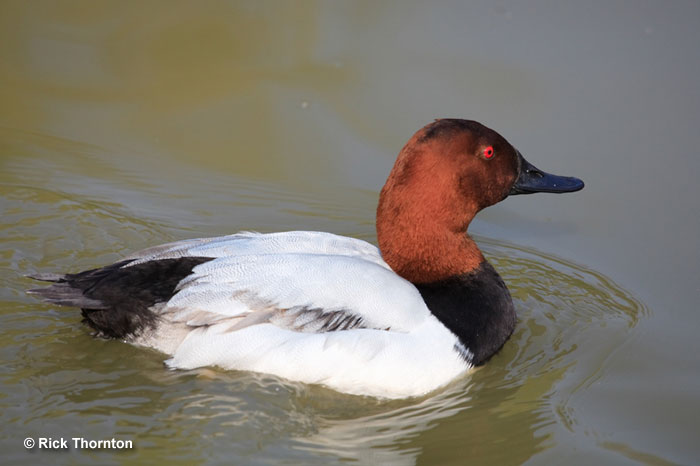
The Canvasback is a duck with an odd name. French and Spanish names for this handsome diving duck focus on its pale back and translate to “White-backed Duck”. However, for whatever reason, English settlers thought the bird’s back looked like canvas, and that name has stuck to this day!
Canyon Towhee
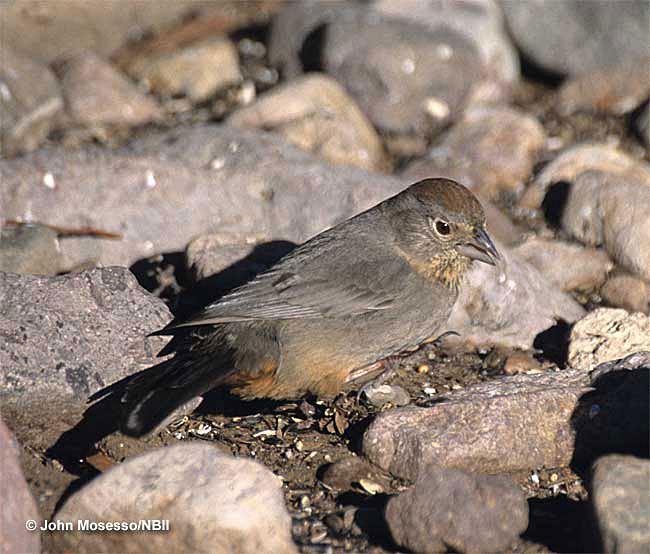
Canyon Towhees used to be known as the “Brown Towhee” and were lumped with the California Towhee. However, when the Brown Towhee was split into two species, the Canyon Towhee got its official name.
It’s a good name, these sparrow-like birds are indeed common in canyons and other rocky habitats.
Canyon Wren
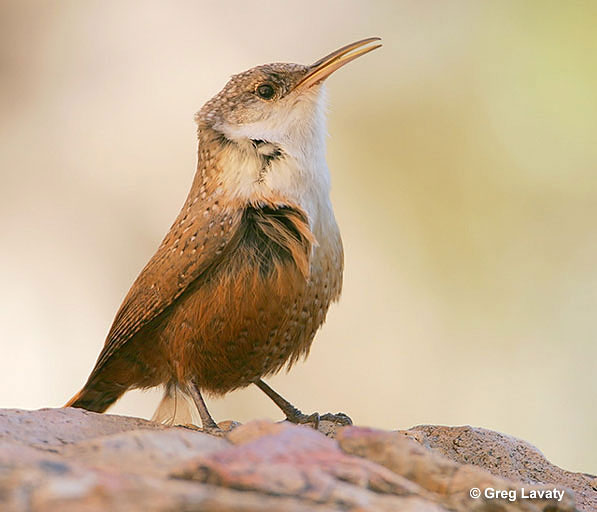
Canyon Wrens are another bird named after the places where they often occur. Go birding in sites with canyons in the western USA and you’ll see why! Or, you’ll probably “hear why”. The Canyon Wren’s rich, loud descending song is a typical sound in canyons and other, similar rocky places.
Cape May Warbler
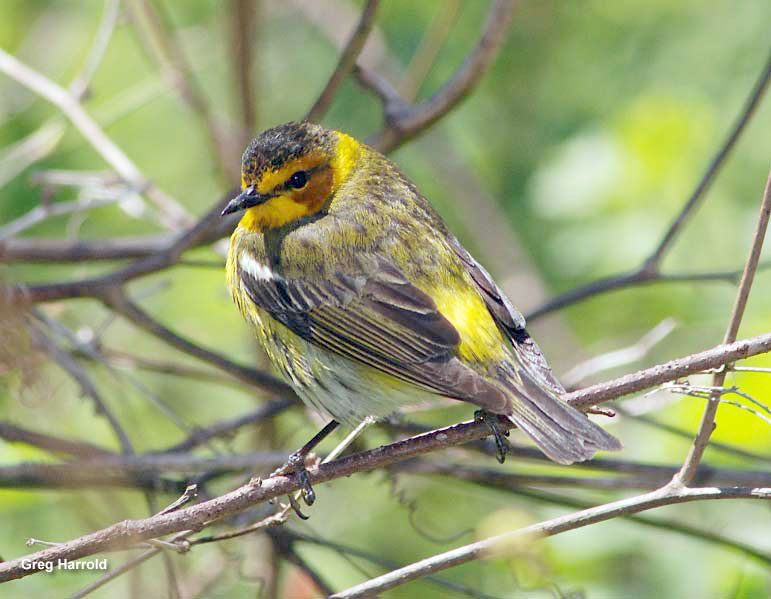
The Cape May Warbler has a nice name but it doesn’t describe the bird very well. This pretty warbler breeds in boreal forests and only migrates through Cape May, New Jersey. In 1812, American zoologist Geord Ord collected one in Cape May. He and ornithologist Alexander Wilson ended up naming it after the place of their discovery.
Carolina Chickadee
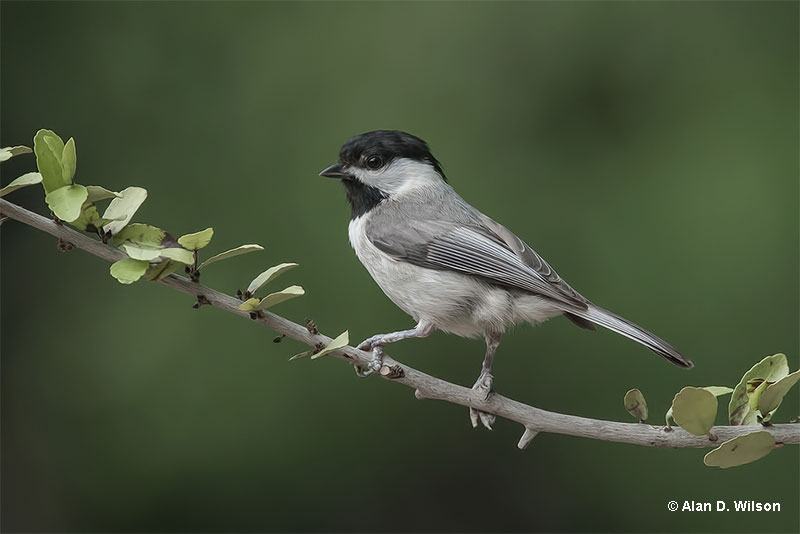
The Carolina Chickadee was named by 19th century ornithologist and artist John James Audubon after he found one in South Carolina. “Black-capped Chickadee” would have been a good, descriptive name but another, closely related bird already had it. Carolina Chickadee hints at the southeastern distribution of this common backyard bird.
Carolina Wren
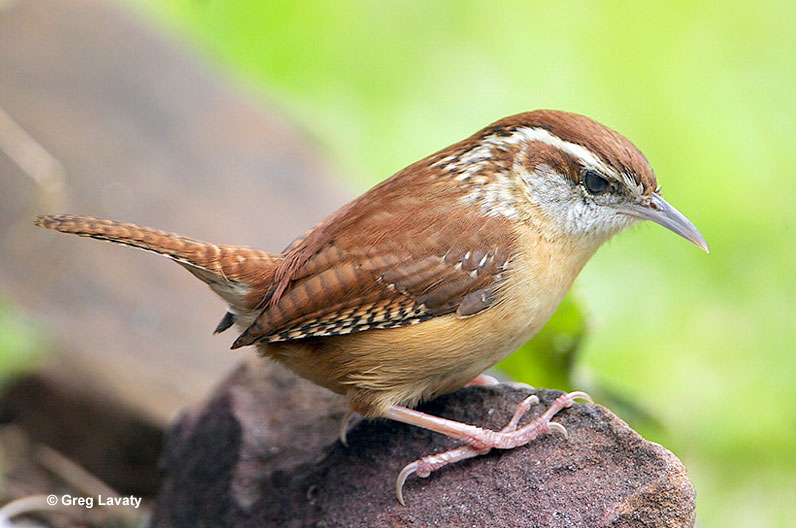
The Carolina Wren is another bird named after its southern distribution. When it was first described in the 18th century, the Carolina Wren was mostly restricted to the southeastern USA. However, since then, it has expanded north into southern Canada. Nevertheless, it’s still much more common in the southern states.
Caspian Tern
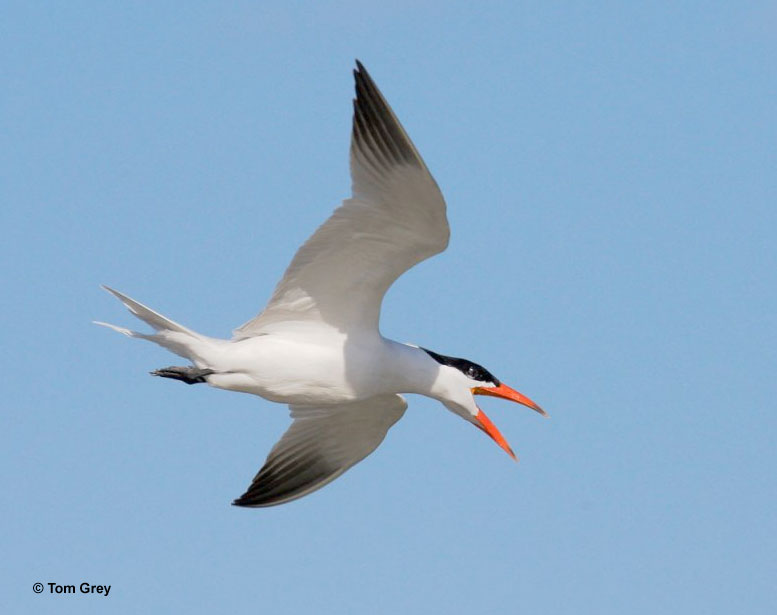
The name of the Caspian Tern refers to its main area of distribution in Eurasia. Larger numbers occur at and near the Caspian Sea than other areas. In North America, they mostly breed around big, inland lakes, including the Great Lakes region. A better name for this bird might be “Lake Tern”.
Cassin’s Auklet
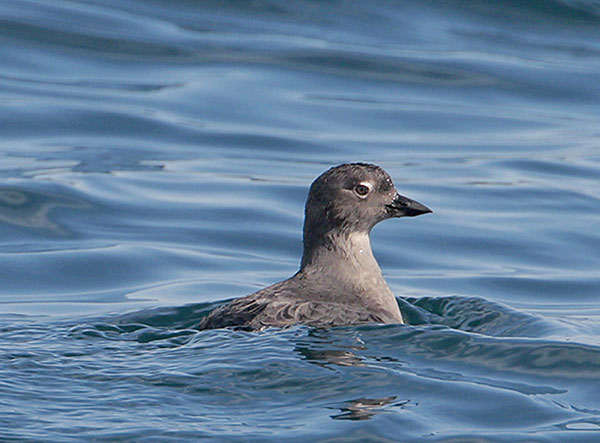
Photograph © Greg Lavaty
The Cassin’s Auklet was named after the 19th century American ornithologist, John Cassin. He The namers of this bird might have been inspired to name it after him in part because they weren’t sure what else to call it!
This small aquatic bird has plain gray and white plumage with few prominent field marks.
Cassin’s Finch
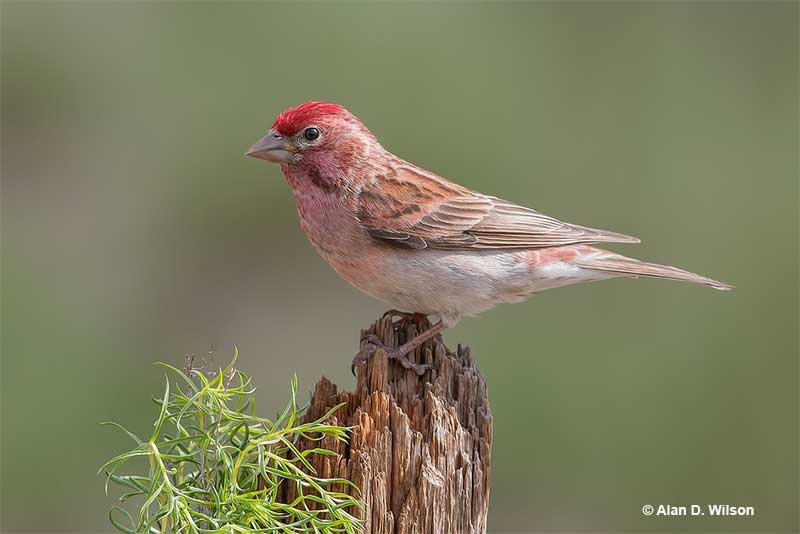
Like the auklet and some other “Cassin” birds, this species was named after a 19th century American ornithologist. Birds named after Cassin tend to closely resemble other species or have few field marks.
The Cassin’s Finch is no exception. This pretty western bird is very similar to the House Finch and the Purple Finch.
Cassin’s Kingbird
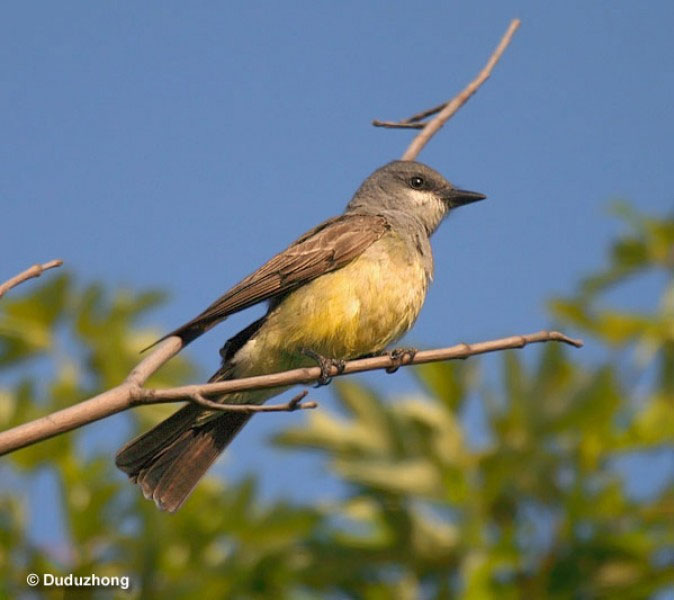
The Cassin’s Kingbird closely resembles the Western Kingbird and a few other tropical species. That could be why it was named after 18th century ornithologist John Cassin. The scientists who named it probably weren’t sure what else to call the bird and wanted to commemorate Cassin.
One good named might be, “White-chinned Kingbird”.
Cassin’s Sparrow
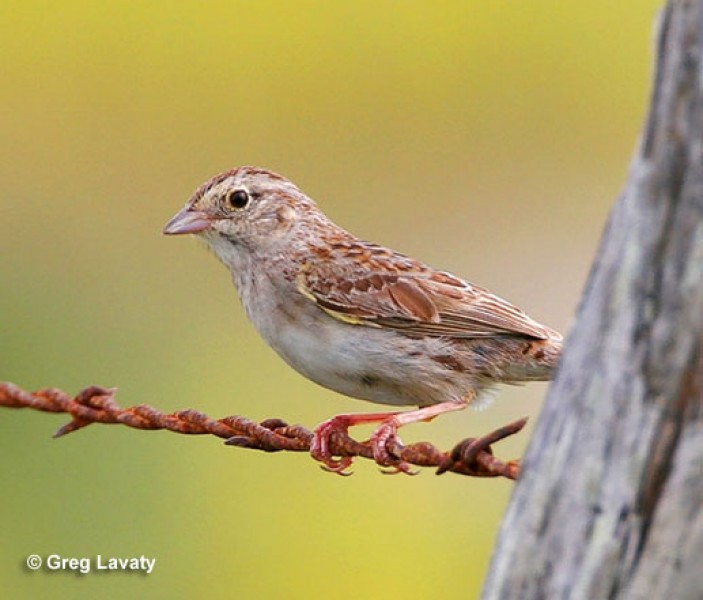
The Cassin’s Sparrow is another bird species named after Philadelphia ornithologist John Cassin. Although Cassin never saw the bird, he was important ornithologist of his time and the discoverer wanted to commemorate him with this unique yet nondescript species.
Another, more descriptive name for it could be “Short-grass Prairie Sparrow”.
Cassin’s Vireo
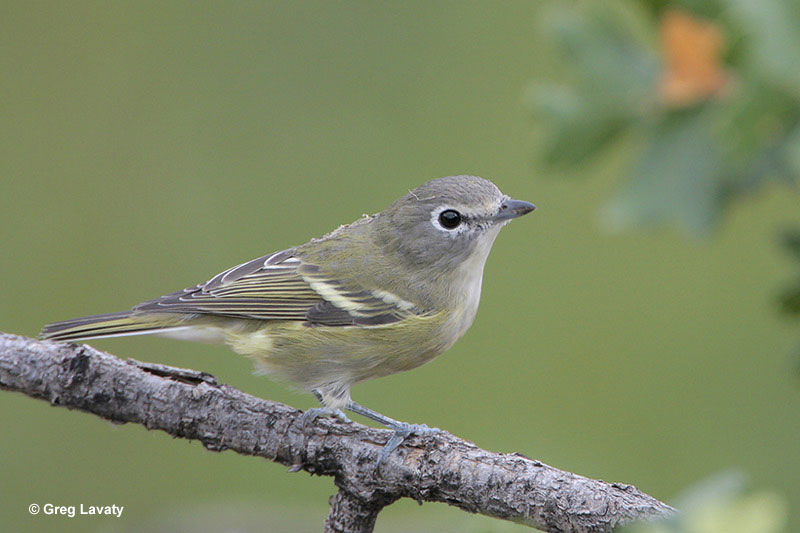
The Cassin’s Vireo used to be known as the Solitary Vireo along with the Blue-headed and Plumbeous Vireos. However, studies showed that all were valid species.
In part, this and other western birds were named after ornithologist John Cassin because he published the first comprehensive study on birds of the western USA.
Cattle Egret
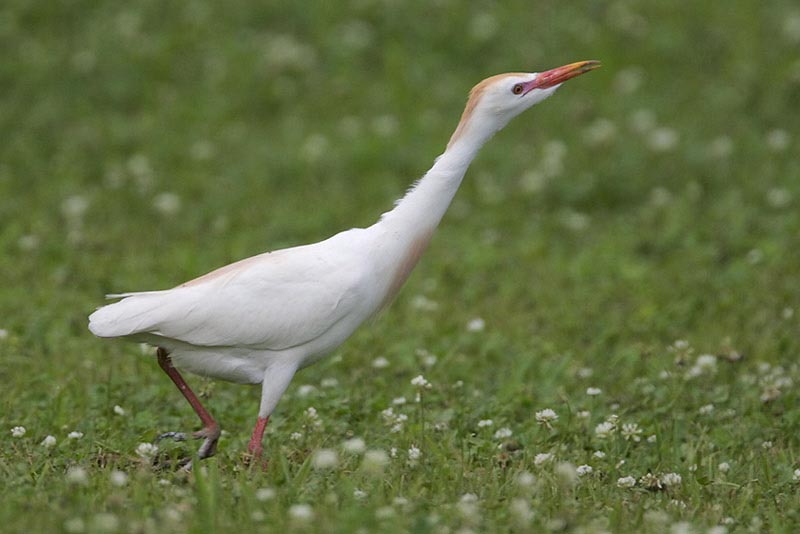
Cattle Egret get their name from one of their favorite mammalian companions. No matter where they occur, these small egrets always forage with large grazing animals. In Africa and Asia, they evolved to catch insects and small animals that the mammals flush from the grass.
In present, times, most of the animals they forage with are cattle.
Cave Swallow
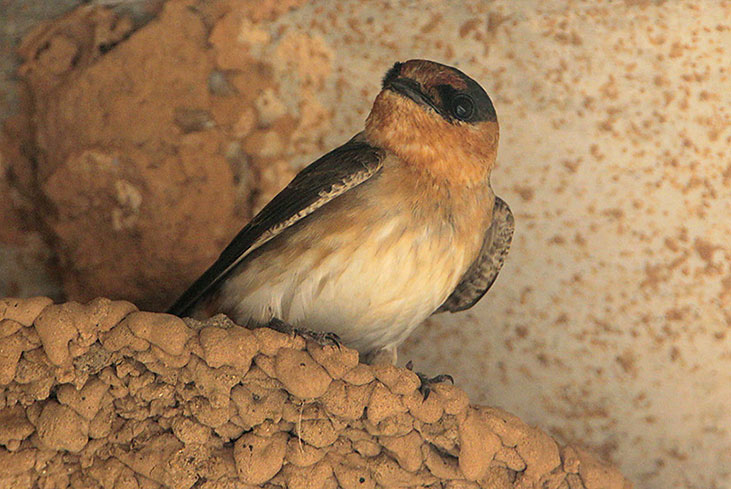
The Cave Swallow is named after its favorite nesting site. Colonies of this relative of the Cliff Swallow mostly breed in caves and similar subterranean places such as limestone sinks. In some places, they have also learned to breed under bridges and other structures but most still occur in caves.
Cedar Waxwing
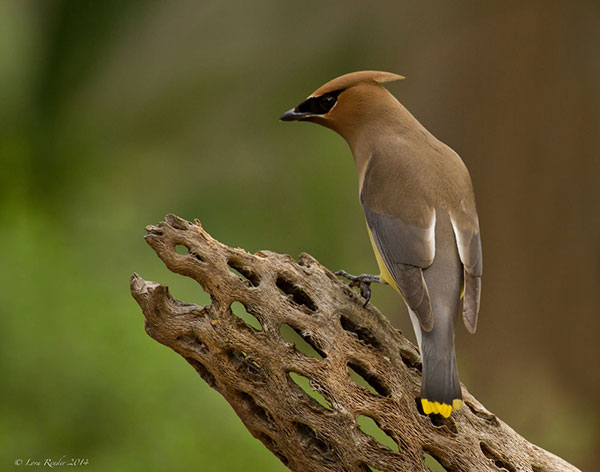
Cedar Waxwings are named after the cedar trees that they frequently forage in. However, it’s not the best of names because Cedar Waxwings also feed in Hackberries, Cherries, and many other trees.
Early European colonists may have noticed them more in cedars than other trees and the name stuck.
Cerulean Warbler
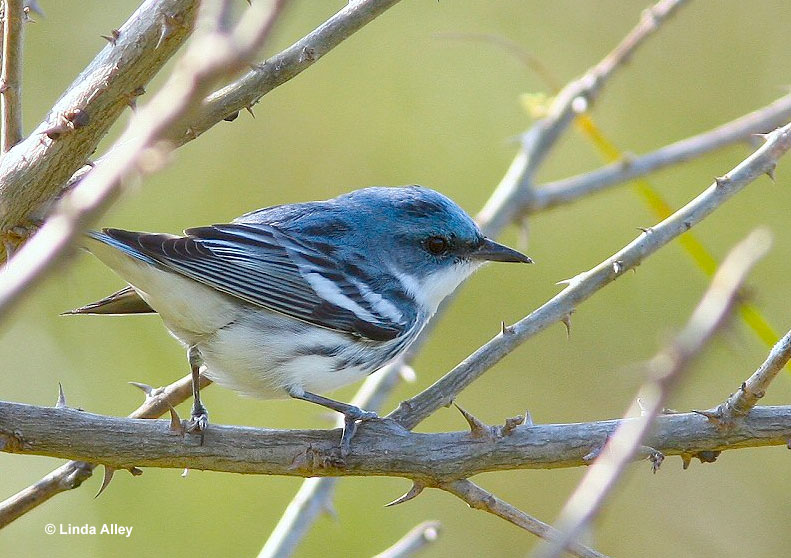
The Cerulean Warbler gets its name from the bird’s pretty, blue plumage. When they feed high overhead, that color can be hard to appreciate. However, if you are fortunate to see a male Cerulean Warbler feeding in low vegetation, you’ll understand how it got its name.
Males have beautiful blue upperparts and some blue streaks underneath!
Chestnut-backed Chickadee
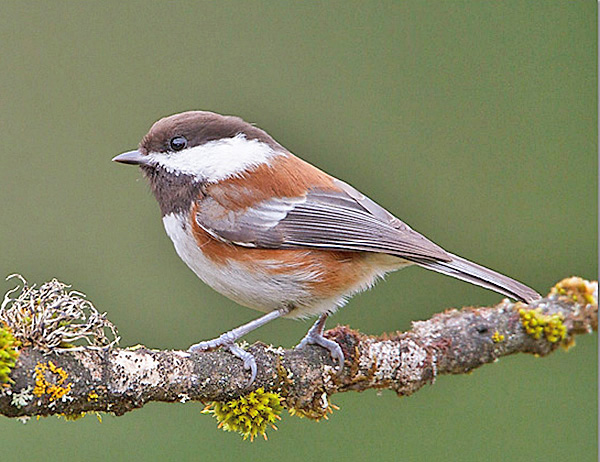
The Chestnut-backed Chickadee is named after a prominent field mark. This handsome chickadee of wet western forests has pretty, red-brown upperparts. The color on its back is also easy to notice.
This name is a good one for another reason too. The Chestnut-backed Chickadee is the only member of its family with this feature!
Chestnut-collared Longspur
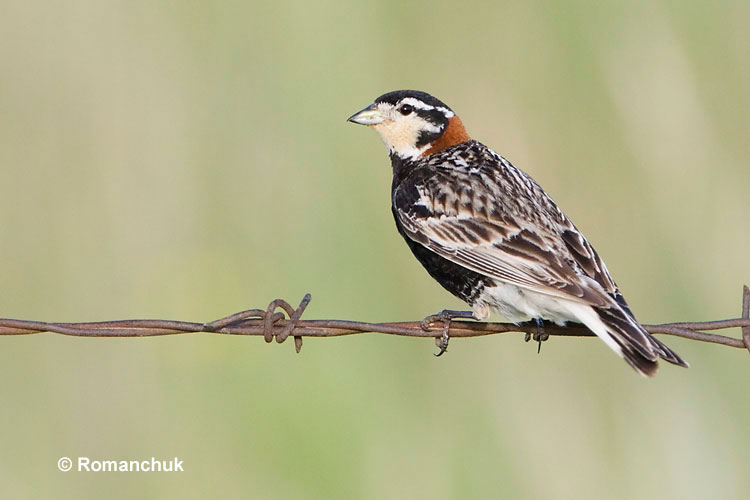
The Chestnut-collared Longspur gets its name from a good field mark. In breeding plumage, this pretty, sparrow-like bird has bright chestnut on its nape. Although its plumage is much duller in the winter, summer plumaged male Chestnut-collared Longspurs are striking birds.
The other “longspur” part of their name refers to the long, extended claw on their back toe.
Chestnut-sided Warbler
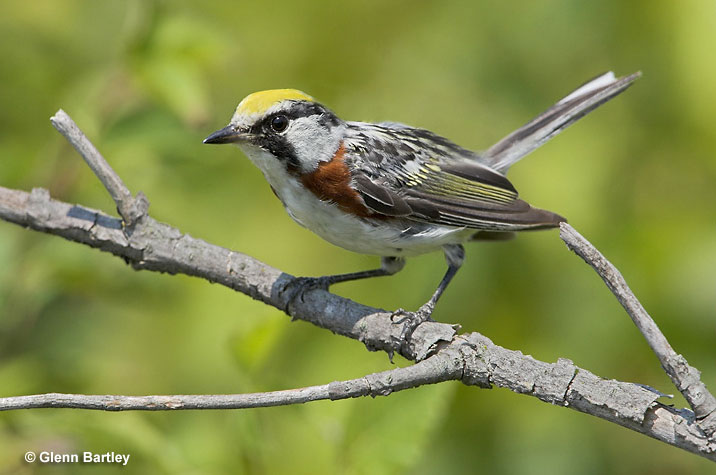
The Chestnut-sided Warbler is named after one of the highlights in its beautiful breeding plumage. Although these pretty birds are mostly gray and olive in fall and winter, when they come back in May, they are stunning birds with sharp chestnut-colored flanks.
It makes them easy to identify and easy on the camera.
Chihuahuan Raven
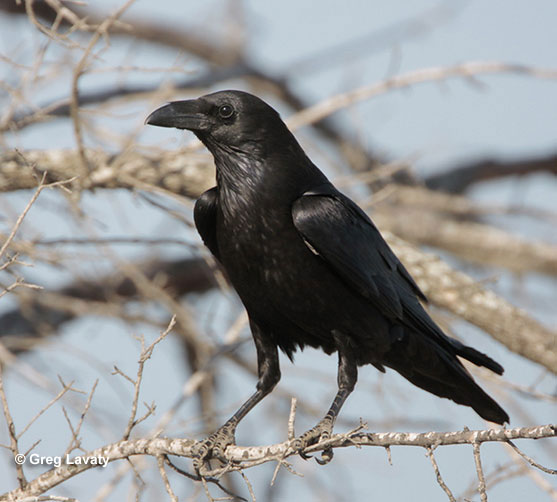
The Chihuahua Raven is named after its main distribution and habitat. This big Corvid only lives in the desert habitats in the Chihuahuan desert ecoregion. This includes northern Mexico, western Texas, and some other areas in the southwestern USA.
In reference to the white feathers typically hidden on its neck, it has also been called the White-necked Raven.
Chimney Swift
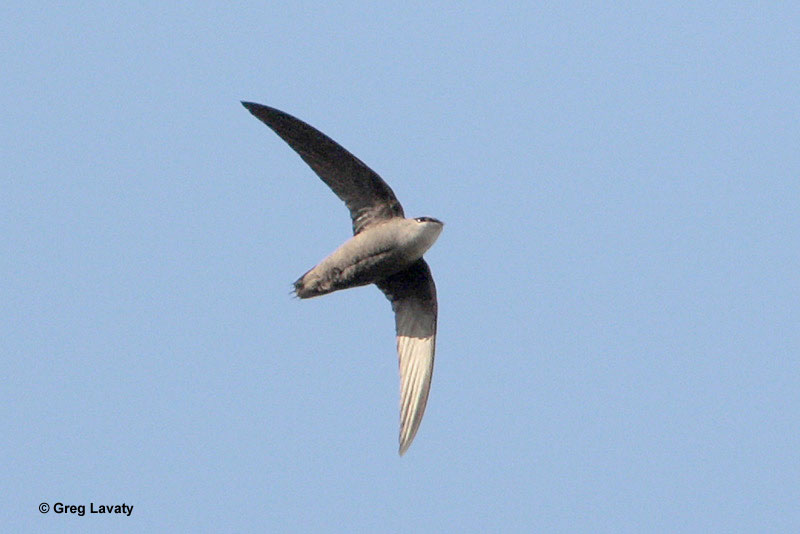
Chimney Swifts have a pretty good name. Large numbers of these small, plain colored aerialists do indeed live in chimneys!
For this swift species, unused chimneys act as good roosting and nesting sites. In the absence of chimneys, these aerial insectivores make use of hollow trunks and crevices.
Chipping Sparrow
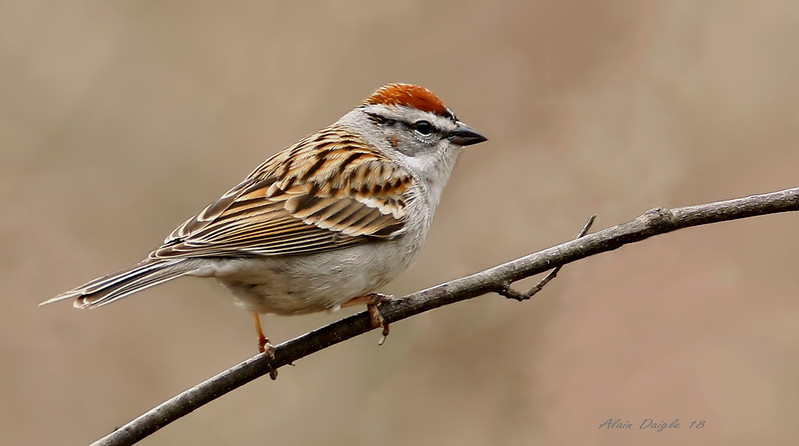
Chipping Sparrows are named after the male’s distinctive song. Go birding in this common sparrow’s range in spring and summer and you’ll hear them!
They often perch on a conifer and sing a fresh, mechanical trill, especially in parks, suburbs, and similar habitats. Although “Trilling Sparrow” might be a more accurate name, Chipping Sparrow is still a good name!
Chuck-will’s-widow
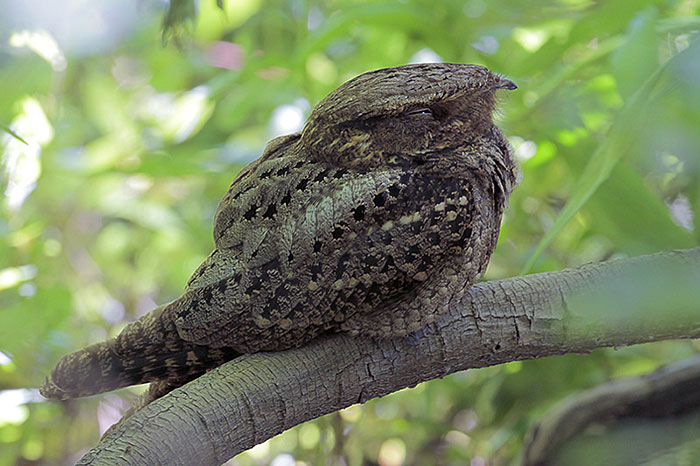
The Chuck-will’s-widow is named after its evocative song. In spring and early summer, these big nightjars sing their name on humid, southern nights.
Although they have declined, you can still hear them in many parts of the southeastern USA, especially brushy areas next to forest. They often sing from the top of a bush or other low perch.
Chukar
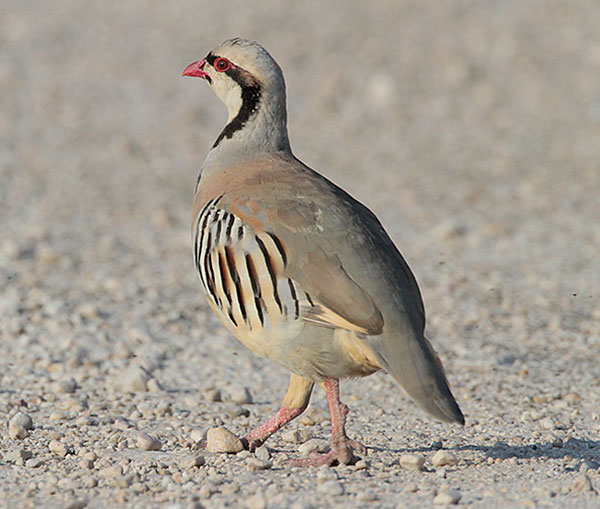
Chukars are beautiful partridges native to central Asia. Their name is probably an ancient one and comes from the main sound they make.
Chukars make a distinctive, repetitive “chuck chuck chuck chuck chuck chucker chucker chucker”.
You might hear them say their name in Hawaii and dry parts of the western USA where these Asian birds have been introduced.
Cinnamon Teal
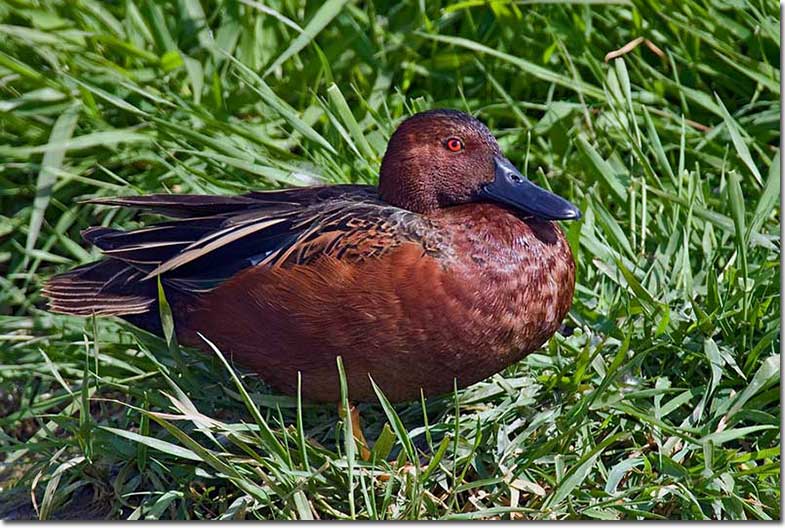
The Cinnamon Teal is named after the breeding male’s beautiful, deep, reddish-brown plumage. In spring and summer, this species is one of the most beautiful ducks in western North America.
Visit wildlife refuges and other marshes in the western USA and parts of western Canada to get an eyeful of this beautiful bird!
Clapper Rail
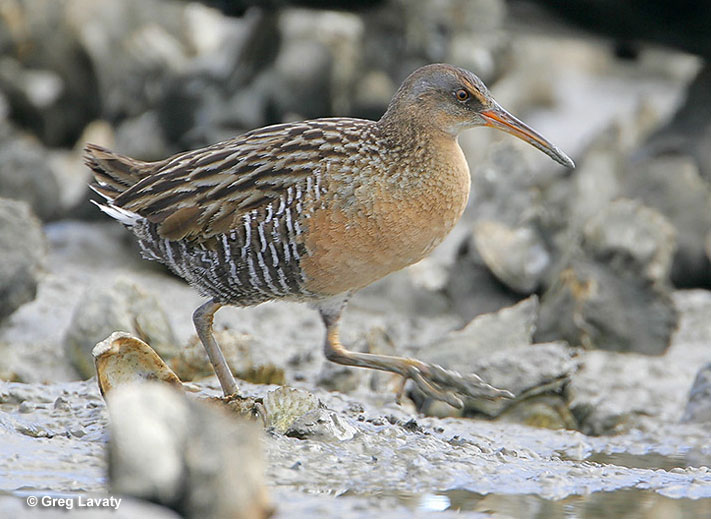
The Clapper Rail is a common marsh bird of coastal wetlands. Like most rails, you also hear a lot more than you see.
They often make a loud, staccato ticking sound that speeds up. In general, it sort of sounds like someone clapping their hands and that’s how this rail got its name.
Clark’s Grebe
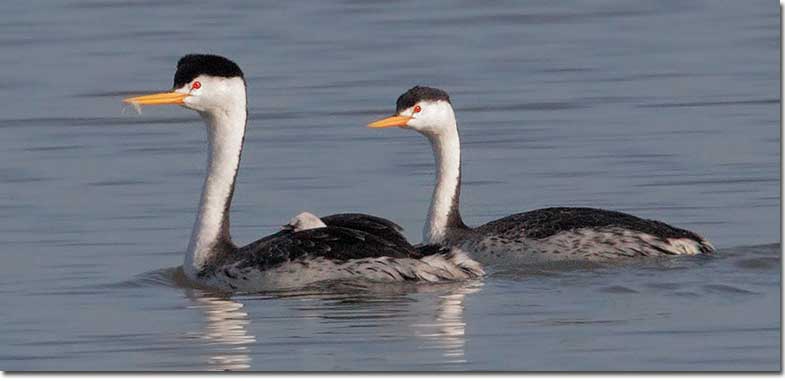
The elegant Clark’s Grebe used to be lumped with the similar Western Grebe. However, studies eventually showed that these two birds were separate species, and the Clark’s Grebe got its English language name.
It was named in honor of John Henry Clark, a 19th century surveyor and naturalist who worked in the western USA.
Clark’s Nutcracker
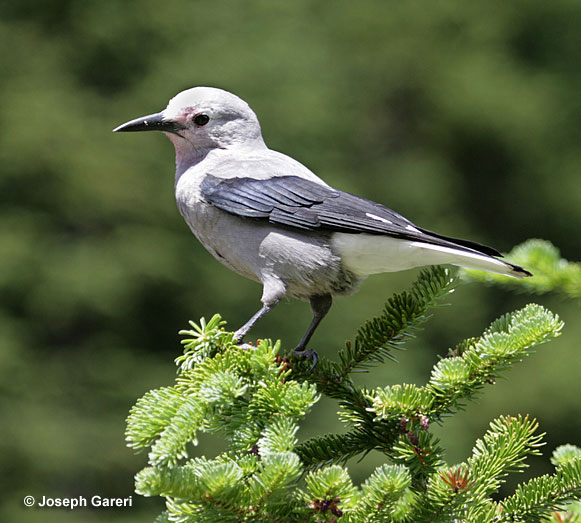
The Clark’s Nutcracker is a unique Corvid synonymous with western mountain ranges. This fun bird is named after William Clark of the Louis and Clark Expedition.
In 1805, William saw one for the first time while exploring the Salmon River area. In modern times, it’s much easier to see Clark’s Nutcrackers at ski resorts and along mountain roads.
Clay-colored Sparrow
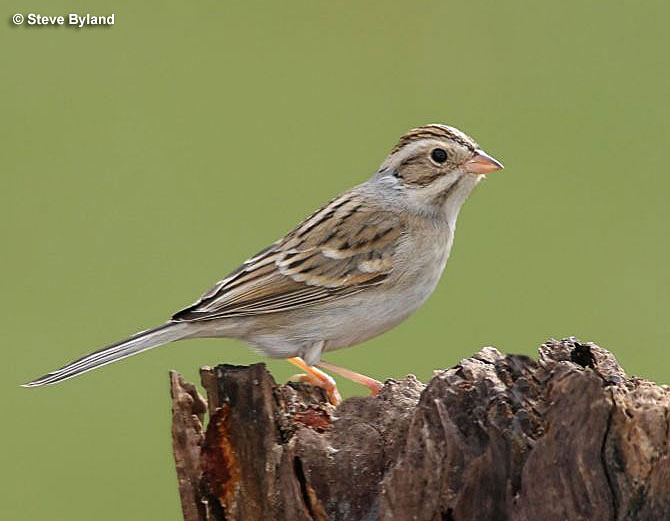
Clay-colored Sparrows are named after their basic coloration. True to their name, these small, slender sparrows are pale grayish-brown. Since they don’t have a lot of distinctive field marks, that name works!
Another good name for this bird could be “Jack Pine Sparrow”; a name that refers to one of its favored habitats.
Cliff Swallow
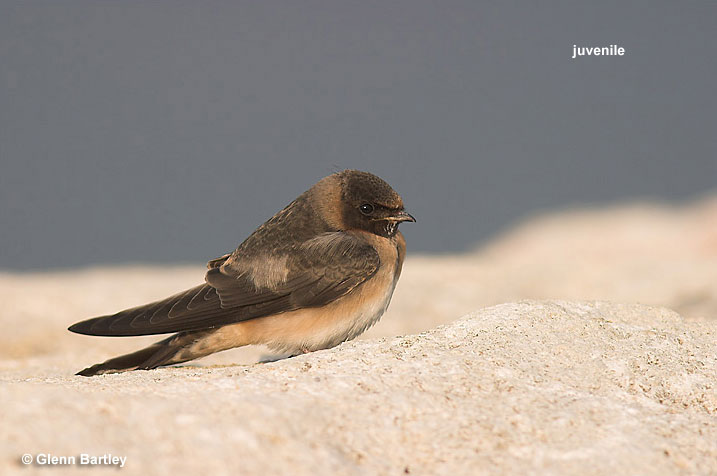
Cliff Swallows are named after their nesting behavior. This handsome swallow species nests on all sorts of vertical structures including rock walls, bridges, and cliffs.
If you find a nesting site, you’ll probably see a lot of them. Cliff Swallows typically build their mud nests in colonies.
Colima Warbler
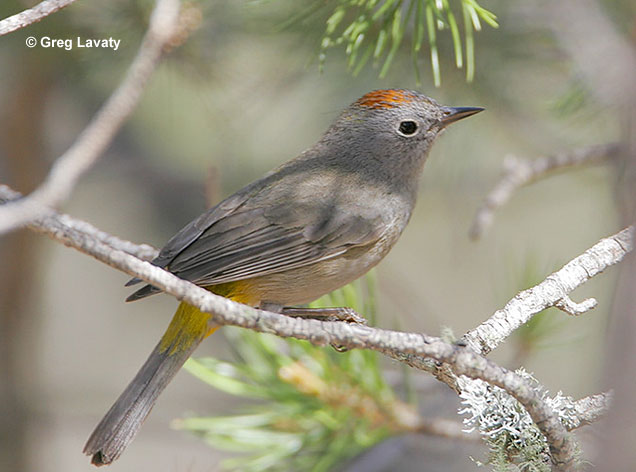
The Colima Warbler has an interesting name that doesn’t have anything to do with the bird’s appearance. However, it has a lot to do with their wintering grounds.
These uncommon warblers breed in a tiny part of southwestern Texas and northern Mexico, and winter in western Mexico, especially the province of Colima.
Connecticut Warbler
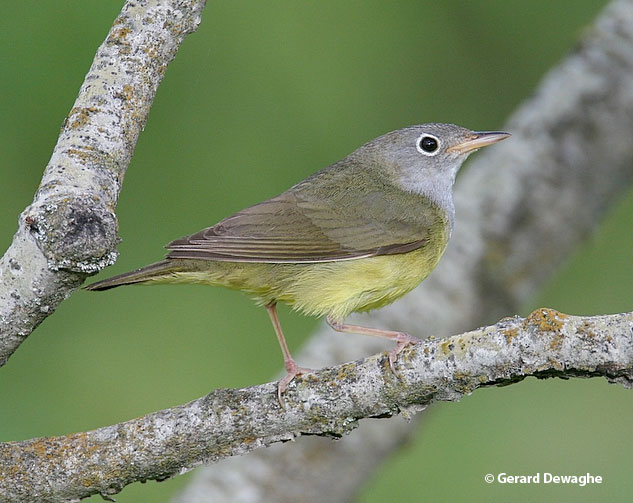
Connecticut Warblers don’t breed in this New England state but small numbers are passage migrants. On 1812, one of those migrants was found by 19th century ornithologist Alexandar Wilson.
Instead of calling it something descriptive like “Eye-ringed Warbler” or “Hard to See Warbler”, he named it after Connecticut and it still goes by that name today!
Cooper’s Hawk
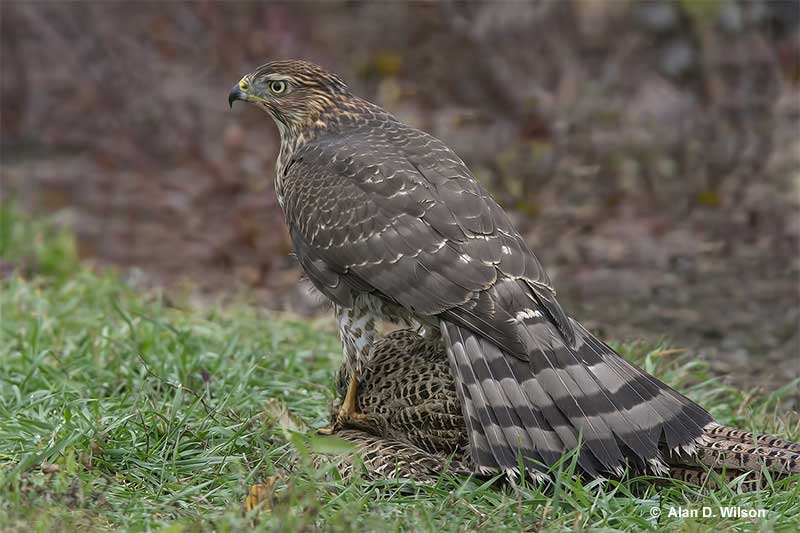
The Cooper’s Hawk was named after 19th century ornithologist, William Cooper. In 1828, another ornithologist, Charles Lucien Bonaparte, gave this common raptor that name in honor of his friend and colleague.
Although the name stuck, it doesn’t hint at this powerful raptor’s capabilities, nor its rounded tail and blocky head.
Cordilleran Flycatcher
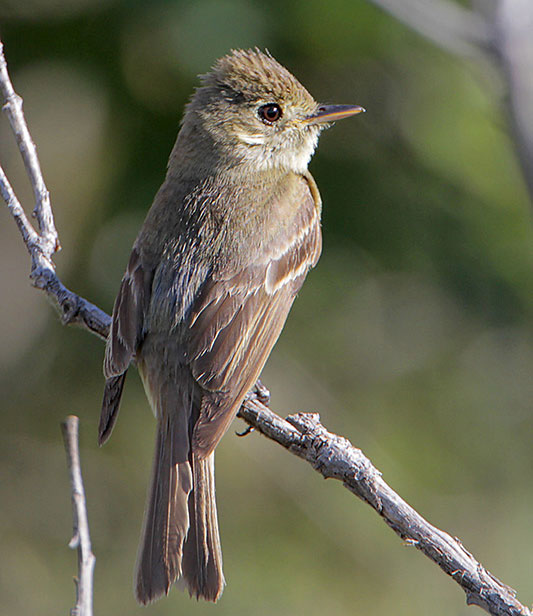
The Cordilleran Flycatcher used to be known as the “Western Flycatcher”. However, to separate it from the extremely similar Pacific Slope Flycatcher, it was called “Cordilleran” in reference to its montane distribution.
However, recently, studies have shown that these two birds are really the same species and will once again be known as the “Western Flycatcher”!
Costa’s Hummingbird
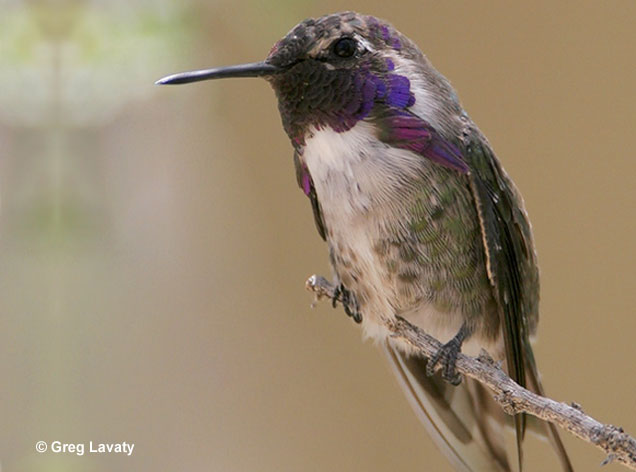
The Costa’s Hummingbird is a small desert hummingbird named after a French nobleman. In 1839, French ornithologist Jules Bourcier described the bird and named it after “Louis Marie Pantaleon Costa, Marquis de Beauregard”!
Since that nobleman’s name could be longer than the bird itself, a better name for the Costa’s Hummingbird might be “Purple-headed Hummingbird”.
Couch’s Kingbird
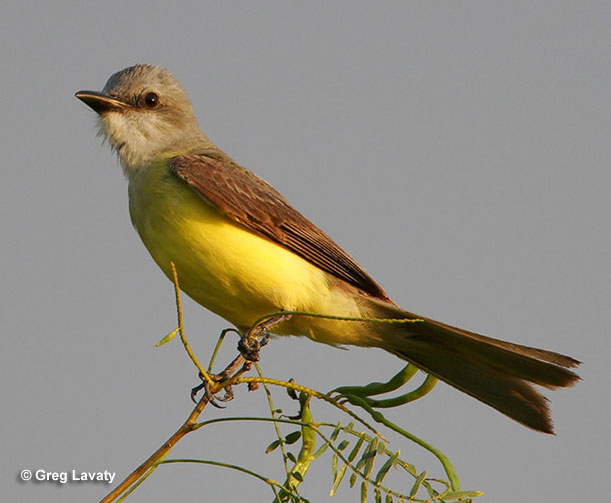
The Couch’s Kingbird lives from southern Texas to Guatemala. In the 1850s, American soldier and naturalist Darius N. Couch found and officially described it during an expedition to northern Mexico.
The Couch’s Kingbird looks so similar to the Tropical Kingbird, it was eventually lumped with that species. However, Couch was right, the Couch’s Kingbird is definitely a valid species.
Crescent-chested Warbler
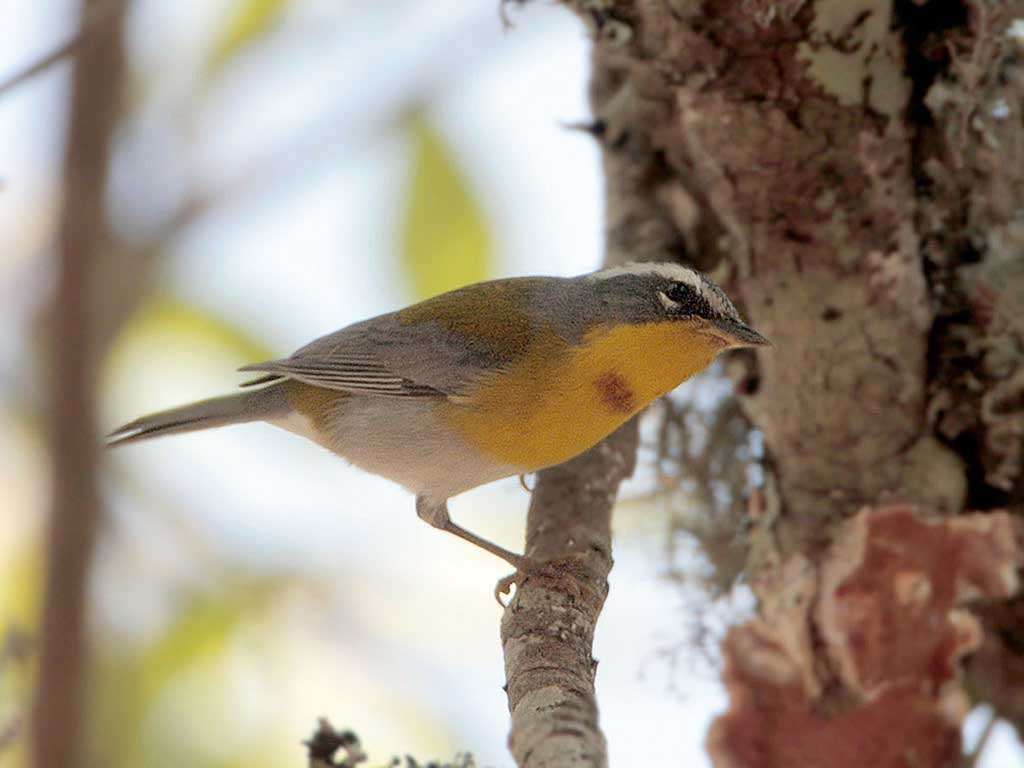
The Crescent-chested Warbler is a pretty little songbird that mostly lives south of the border. However, rarely, one makes its way to Arizona or Texas and birders can witness how this warbler species got its name.
Crescent-chested Warblers have a reddish, crescent-shaped mark on their bright yellow chest.
Crested Caracara
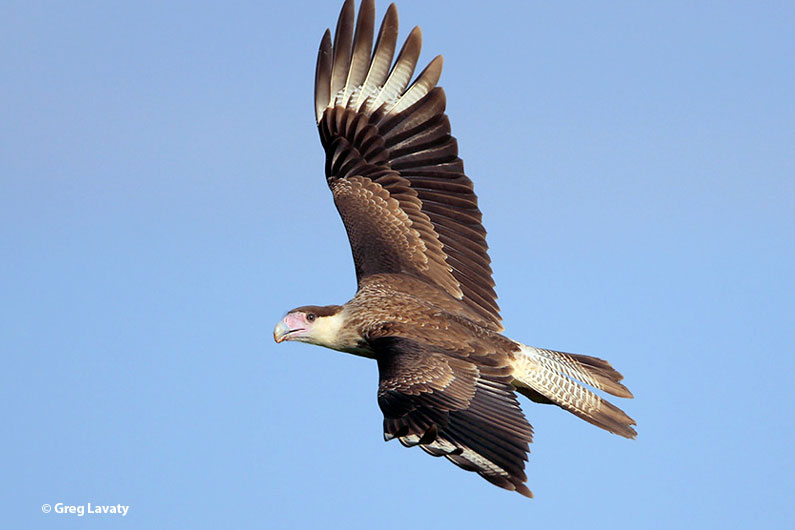
Crested Caracaras are big, black and white falcons. Their name comes from their short, black, feathered crest, and an old word for this and some other tropical caracara species.
The word “caracara” stems from the Tupi language of Brazil. It might actually stem from another tropical caracara species that makes a vocalization that sounds like, “cara cara”.
Crissal Thrasher
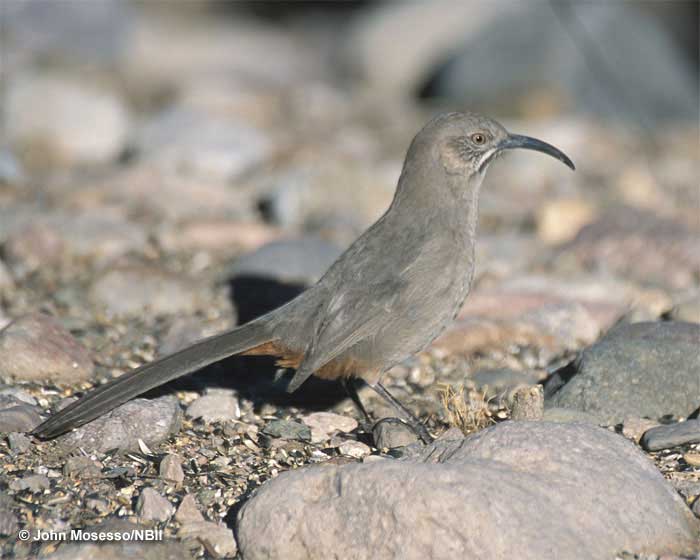
The Crissal Thrasher is named after one of its main field marks. A “crissum” is the area on a bird under its tail. On Crissal Thrashers, their crissums are red-brown.
Since they are also the only colorful spot on this grayish bird, it seems like a good name for it.
Curve-billed Thrasher
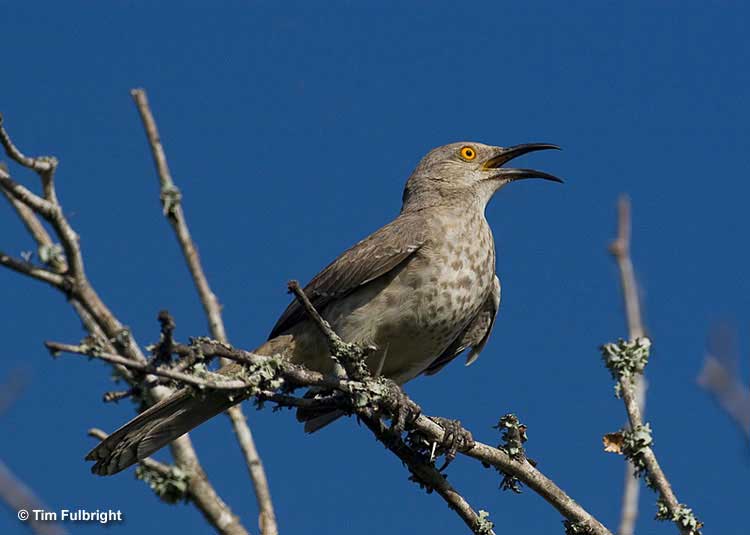
Curve-billed Thrashers are eye-catching members of the mockingbird family with strong, sharp, downcurved beaks. That beak is how this bird got its name, and with good reason.
The Curve-billed Thrasher’s beak is one of its most obvious features and helps it dig holes in the ground and find all sorts of food.
Bird Families Starting With C
In North America
- Cuckoos – medium-sized, long-tailed birds, many of which are nest parasites.
- Coots – dark, duck-like members of the Rail family with stubby, chalky white beaks.
- Chachalacas – slender, smallish brown and arboreal, pheasant-like birds that range from Texas to Argentina.
- Collared-doves – pale doves, many of which have a dark mark or “collar” on their nape.
- Coucals – medium and large, long-tailed ani-like cuckoos that live in Asia, Africa, and Australasia.
- Crakes – small rails with short beaks that creep around low, dense vegetation.
- Cranes – tall, majestic birds with long necks that do amazing courtship dances.
- Curlews – large sandpipers with long, curved beaks.
- Cormorants – black or black and white aquatic birds that swim underwater to catch fish.
- Choughs – Eurasian crow-like, montane birds with colorful beaks.
- Crows – large, black, highly intelligent and vocal perching birds.
- Chickadees – small cute birds with stubby beaks and black caps and throats.
- Creepers – small birds with fine curved beaks that creep up tree trunks.
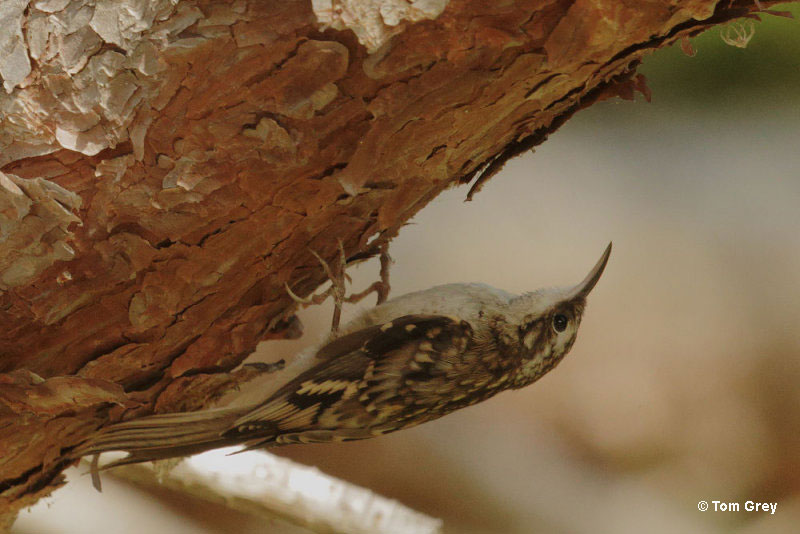
A Creeper!
Around the world
- Cassowaries – huge flightless birds with hair-like feathers and dangerous sharp toes that haunt forests in Australia and New Guinea.
- Crab-plovers – an odd black and white bird with a thick black used for catching crabs.
- Coursers – medium sized, slender terrestrial birds of open arid habitats in Africa and India.
- Caracaras – big, hawk-like falcons with long, broad wings, long legs, and long tails.
- Cockatoos – big white parrots with fluffy crests, most live in Australasia.
- Conures – another name for various parakeets from Central and South America, and the Caribbean.
- Crescentchests – small colorful, terrestrial birds that skulk in low vegetation in arid parts of South America.
- Cinclodes – brown birds with curved or stout beaks and pale wing patches, most live in the Andes.
- Canasteros – small brown, long-tailed South American birds that build big stick nests.
- Cotingas – colorful or loud dove-like birds of tropical forests from Mexico to Argentina.
- Catbirds – a couple members of the mockingbird family, or catbirds from Australasia, several of which sounds like cats.
- Cuckooshrikes – flycatcher or shrike-like birds with long tails that live in Africa, Asia, and Australasia.
- Camaropteras – small, warbler like birds with rather short tails and olive backs that live in Africa.
- Cisticolas – small plain or streaked brown birds that often call in flight over grassy and open habitats in Eurasia and Africa.
- Cupwings – exquisite, brown, gnome-like birds with nonexistent tails that grace the undergrowth of dense Himalayan forests.
- Chlorophonias – tunning emerald green tropical goldfinches, most live in cloud forests from Mexico to South America.
- Canaries – yellowish, finch-like birds with nice songs, most occur in Africa.

